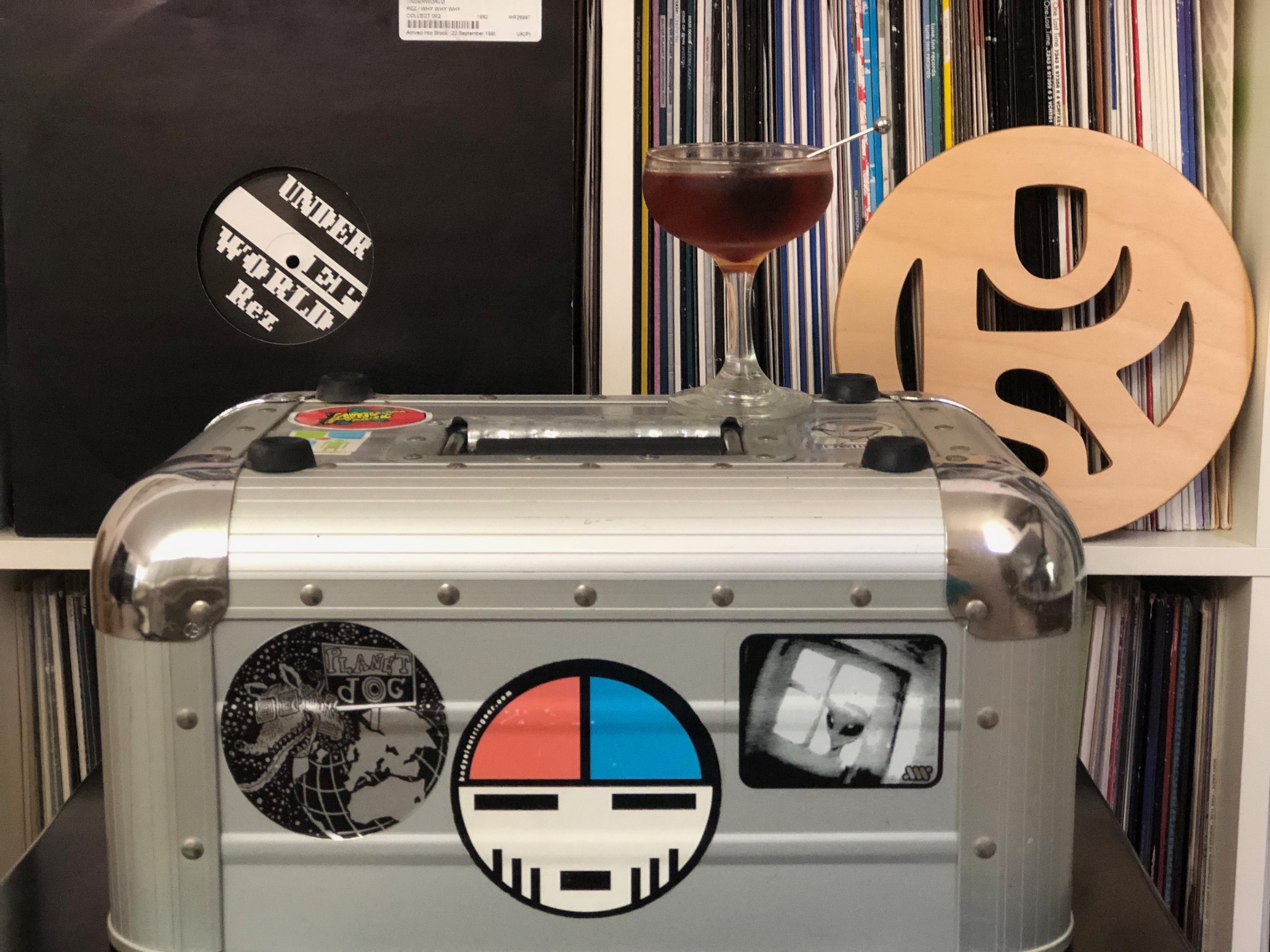
Photo: Daniel Djang
May 13 is World Cocktail Day and in 2024 it also marks the 15th anniversary of Thirsty in LA! To celebrate, I’m putting the band back together for another edition of Booze and Vinyl, an ongoing series inspired by the excellent cocktail books of the same name by André and Tenaya Darlington.
Following the Darlingtons’ template, I invite music nerds from the bar industry to select an album and share recipes for cocktails to sip with it. The guest writers also spotlight a nonprofit that they support.
Starting with a throwback to my previous life as a DJ, read on and enjoy a wonderfully eclectic mix of music and drinks.
Shop local and support independent record stores!
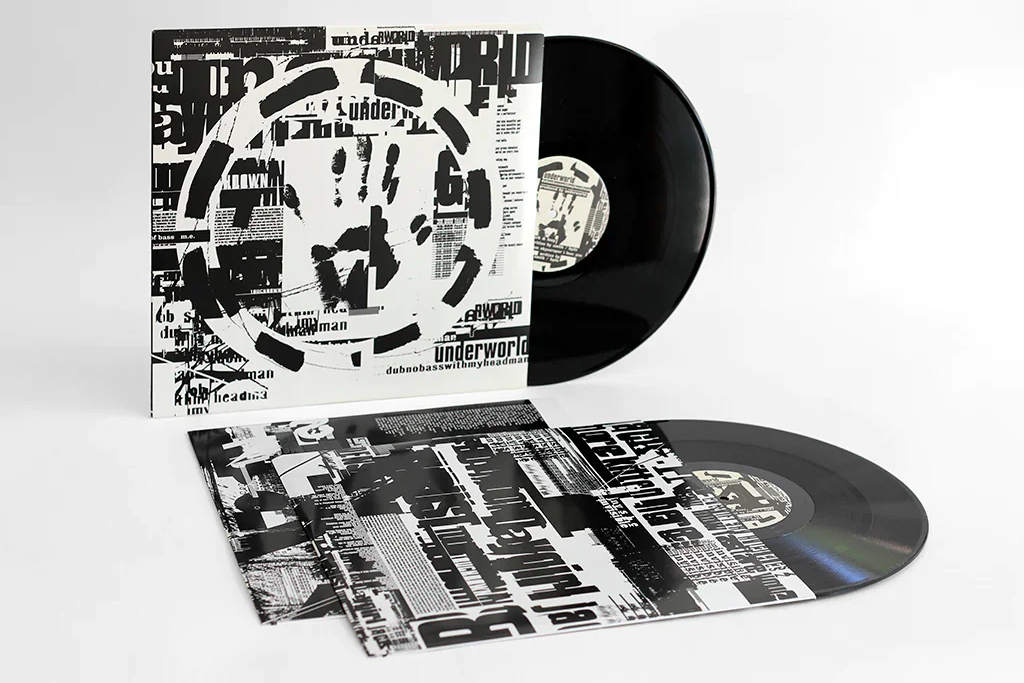
Underworld – “Dubnobasswithmyheadman” (2014 Remaster) | Photo: Underworld
Underworld – Dubnobasswithmyheadman [Junior Boy’s Own, 1994]
This year marks the 30th anniversary of Underworld‘s seminal third album, Dubnobasswithmyheadman. After releasing two studio albums under different monikers and lineups, Karl Hyde and Rick Smith went on hiatus to concentrate on other projects. Their rebirth as Underworld began with recruiting DJ Darren Emerson and signing with the Junior Boy’s Own label.
With Emerson in the vanguard of the London club scene, Underworld evolved from its earlier incarnations to produce tracks like the Lemon Interrupt and Steppin’ Razor mixes of Leftfield’s “Song of Life” that open Sasha & John Digweed’s famed Renaissance: The Mix Collection, which is also celebrating its 30th anniversary.
During my DJ days a lifetime ago, I worshiped at the Progressive House altar of Sasha & Digweed – the tracklists of Renaissance and the original Northern Exposure offered a roadmap of songs, artists and labels to seek out. After appearing on numerous remixes, Underworld was already on my radar when Dubnobasswithmyheadman was released in January 1994. Featuring future classics like “Dark & Long” and “Cowgirl,” the album immediately went into heavy rotation. The signature Underworld sound was set – a heady mix of Hyde’s stream-of-consciousness lyrics, catchy synth hooks and techno beats.
Dubnobasswithmyheadman garnered widespread acclaim on its release, is recognized as an EDM milestone, and is perhaps described best by Melody Maker as “utterly contemporary, the sound of the moment, beautifully capturing melodic techno, deranged lyricism, historic bass and lead guitars and astounding walls of rhythm … This breathtaking hybrid marks the moment that club culture finally comes of age and beckons to everyone.”
A-Side: Dollar Slice
The album’s opening track, “Dark & Long” was reportedly inspired by Hyde’s tenure as a session musician at Prince’s Paisley Park Studios in Minneapolis. Similarly, the 13-minute “Mmm… Skyscraper I Love You” was born out of Hyde’s weeklong exploration of New York, from the pilot announcing “We’re 30,000 feet above the earth” to lyrics scribbled in a Greenwich Village alley at 4am.
Released in the summer of ’94, the Dark Train mix of “Dark & Long” can be heard in the background of the surreal “junkie limbo” scene from Danny Boyle’s Trainspotting (1996), when Renton (Ewan McGregor) is in the throes of heroin withdrawals. In 2012, “Dark & Long (Dark Train)” was played during the Parade of Athletes at the Opening Ceremony of the London Summer Olympics; and featured (along with several more Underworld tracks) on the ceremony’s official soundtrack album, Isles of Wonder.
For her no-ABV cocktail book Good Drinks, author Julia Bainbridge gathered recipes from luminaries such as Jim Meehan, Jeffrey Morgenthaler and LA-based LiveWire founder Aaron Polsky, who contributed the Dollar Slice, originally created for Lorelei Bandrovschi’s Listen Bar pop-up. Polsky includes a “next-level” salt rim, but Bainbridge writes that a standard salt rim or Tajín Clásico chile-lime seasoning are also options. As a nod to Renton’s struggle and for a decompression from a (Dark and) long night of partying, enjoy Polsky’s Bloody Mary variation.
Dollar Slice
by Aaron Polsky | recipe from “Good Drinks” by Julia Bainbridge (2020)
- Spiced Mushroom Salt*
- 1 lime wedge
- 2 oz Seedlip Spice 94
- 4 oz fresh tomato juice
- 1 tsp Tabasco, Sriracha or other hot sauce
- Pinch of kosher salt
- ½ oz fresh lime juice
- Sprig of oregano for garnish
- Peperoncino for garnish (optional)
Pour the mushroom salt into a small, shallow bowl. Rub the lime wedge around the rim of a large footed or collins glass. Dip the rim into the salt aside.
Combine the Seedlip Spice 94, tomato juice, Sriracha, salt and lime juice in one half of a cocktail shaker and fill halfway with ice.
Dump the mixture into the other half of the shaker, then dump it back. Roll the drink this way two more times.
Pour into the prepared glass and garnish.
*Spiced Mushroom Salt
makes ¾ cup, enough for “a heck of a lot of drinks”
- 1 oz packet dried shiitake mushrooms
- 3 tbs store-bought pizza seasoning
- 2 tbs hickory-smoked salt
In a spice grinder, blend the shiitakes in three batches until a powder forms. Transfer to a bowl.
Add the pizza seasoning and salt to the grinder, then blend until combined.
Add to the mushroom powder and stir to combine.
Store in an airtight container at room temp for up to two months.
B-Side: Cherry Blossom Cocktail
Back in the day, I was a member of a DJ collective called OURS Gathering, which recently celebrated its 25th anniversary. (I’m way more “Couchella” than Coachella these days, so I was there “in spirit” so to speak.) OURS threw underground parties in the deserts and mountains of SoCal – TBH nothing compares to spinning (vinyl, ahem) and dancing under the stars, with the Milky Way spanning the horizon and the stars shining so brightly we didn’t need to set up lighting.
One 12″ that never left my flight case was “Rez,” a non-album cut with an unmistakable, otherworldly synth lead line and a tribal drum pattern that went far beyond a straightforward 4/4 beat – guaranteed to energize the crowd in the heart of the night or to cap off a sunrise set. The “Rez” / “Cowgirl” mashup has become a staple of Underworld’s live sets – “Everything, Everything” indeed!
The thunderous drums on “Rez” have always reminded me of Japanese taiko, so with that in mind we turn to Julia Momosé’s gorgeous cocktail book The Way of the Cocktail, previously featured by Keli Rivers [see below] in the 2022 edition of Booze and Vinyl.
The Japanese calendar is broken into 24 microseasons called sekki, and in The Way of the Cocktail Momosé organizes her recipes by season. As this post goes live, Los Angeles is emerging from a very wet Spring – one of the cocktails Momosé features in the Shunbun (Spring Equinox) section is the Cherry Blossom, created by Tasaburo Tao at his Café de Paris in Yokohama in 1923. Momosé adjusts Tao’s original recipe for modern palates, eschewing the grenadine and bringing up the citrus elements, while noting that it’s designed as a petite nightcap. For a full-size cocktail, simply double the recipe.
Cherry Blossom
recipe from “The Way of the Cocktail” by Julia Momosé (2021)
- ½ oz H by Hine VSOP Cognac
- ½ oz Cherry Heering
- 1 barspoon fresh lemon juice
- 1 barspoon Royal Combier Grande orange liqueur
In a shaker tin, combine the Cognac, Cherry Heering, lemon juice and orange liqueur with ice. Shake to chill, then strain into a well-chilled cocktail glass.
Bonus Track: “Father’s Song”
This year marks the 40th anniversary of the legendary Purple Rain by Prince and The Revolution, released on June 25; and the film of the same name (July 27). For this native Angeleno, the summer of ’84 was glorious – LA hosted the Summer Olympics; I graduated high school and was headed to UCLA in the fall; and I worked at the UA Coronet triplex just south of Westwood Village. Thanks to the theatre managers’ relationships we saw all of the summer blockbusters for free – Ghostbusters and The Karate Kid played at the Avco; the Mann National had Indiana Jones and the Temple of Doom; Star Trek III and Gremlins were at the Mann Village and Bruin, respectively. Since the Coronet wasn’t in the Village proper, our first-run movies were The Bounty, Beat Street and Bachelor Party among other also-rans. (we did get Amadeus in September and The Terminator in October, so there’s that.)
We probably watched Purple Rain five or six times during its run at the Mann Plaza. In one scene, The Kid (played by Prince) storms into the house looking for his father, Francis L (Clarence Williams III). He finds him at the piano, playing “Father’s Song.”
Featured in the Darlingtons’ original Booze & Vinyl, Purple Rain was the soundtrack of the summer, from the lead single “When Doves Cry” to “Let’s Go Crazy” to the anthemic title track. “Father’s Song” was not on the album’s original tracklist, but the melody was incorporated in the extended instrumental of “Computer Blue.” “Father’s Song” was later included in the Purple Rain Deluxe Expanded Edition released in 2017.
My dad passed away just before Lunar New Year in 2023. To honor his memory, I’ll pour a dram of Balvenie 17-Year Madeira Cask and raise a glass as “Father’s Song” plays on repeat.
Nonprofit: Art Beyond the Glass is back for its 12th event! Join us at ABTG XII on Sunday, June 30 as we raise funds for Self-Help Graphics & Art at the legendary Catch One nightclub.
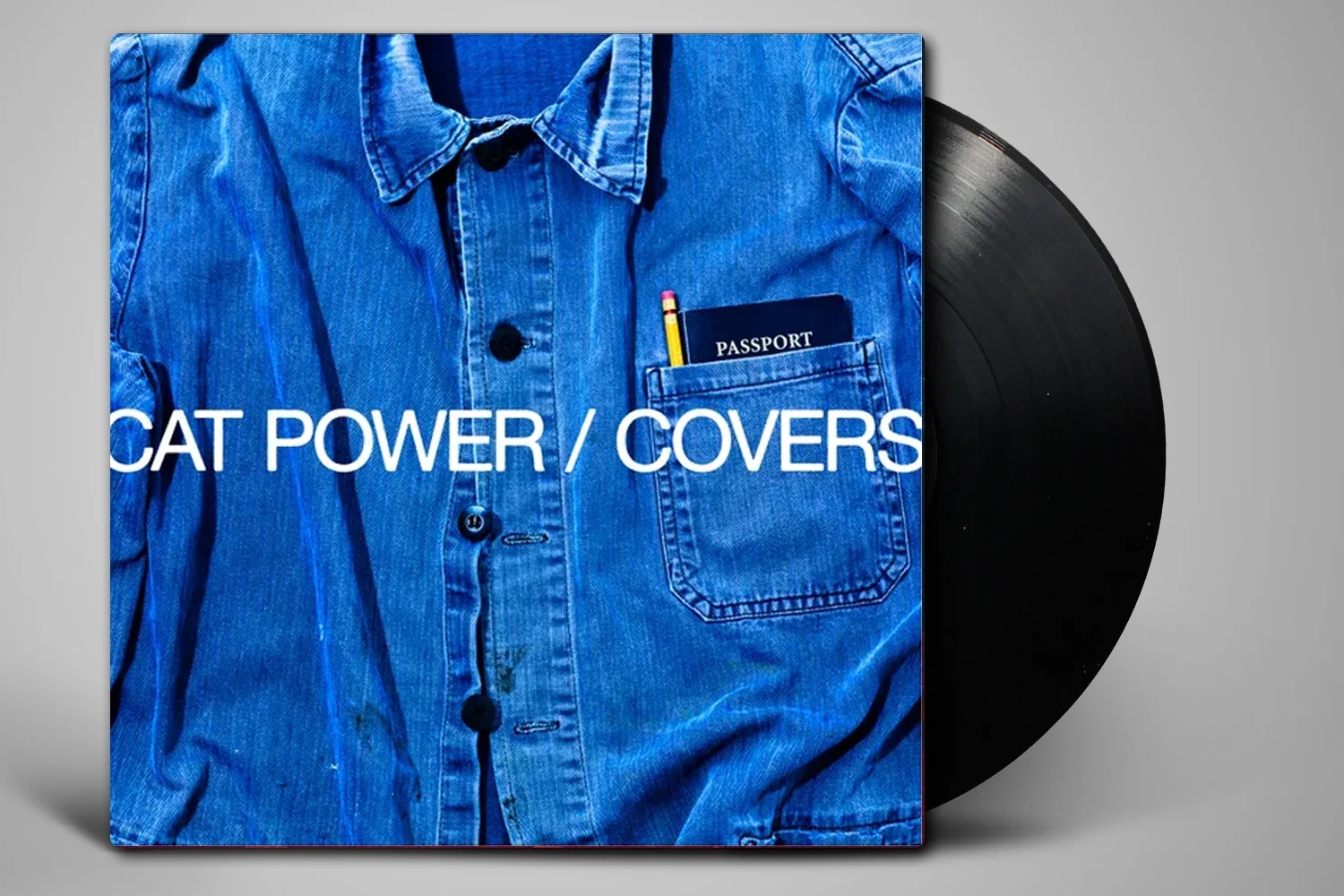
Cat Powers – “Covers” | Photo: Resident Vinyl
BRYAN CHENAULT
Bryan Chenault is the Brand Development Director/Owner of conspiritor consulting, which represents the Ventura Spirits craft portfolio, East Imperial tonics/mixers, and OPTIMIST non-alcoholic. He’s not sure what’s harder to believe: that he’s turning 50 this Summer, or that favorite band Pavement has now gone TikTok viral multiple times.
Cat Powers – Covers [Domino Recording Company, 2022]
While critically acclaimed for her 30-year solo career, with heights like 1998’s Moon Pix and 2018’s Wanderer, along the way Chan Marshall has added cover artist to her repertoire.
If a good cover song is truly making it one’s own, even sometimes rendering the original unrecognizable, Cat Power has become a master. Anyone can trot out a stale retread of a radio hit (see Weezer’s awful rendition of Asia’s “Africa”), but it takes a special talent to dig up a deep cut or back album oddity and give it a decidedly different feel / tempo / groove.
Now on her fourth time out exploring others’ songs (2023’s Cat Power Sings Dylan: The 1966 Royal Albert Hall Concert), she’s adept at reimagining — and often improving (see Lana Del Rey’s “White Mustang”) — works of musicians from the legendary (Hank Williams, James Brown, Janis Joplin), to the under-appreciated (Will Oldham’s Smog), to the obscure (Dead Man’s Bones, accompanied by the Silverlake Conservatory Children’s Choir).
On Covers, she delivers her strongest collection yet, tackling everyone from Iggy Pop to The Pogues, from Billie Holiday to herself (“Unhate” is a rework of her previous recording “Hate”). Across all 12 tracks, she takes the source material down a musical road less traveled, yet each song is still quintessential Cat Power.
Her brave approach of both rethinking classics of the rock canon (The Rolling Stones’ “(I Can’t Get No) Satisfaction”) and paying homage to timeless folk tunes (Dylan’s “Mr. Tambourine Man”) over the years reminded me of how one my brands, Amaro Angeleno, has taken a similar tack with regard to the traditional Italian Aperitivo, creating something easily Spritz-able, but amping the citrus forwardness and adding a complex array of herbal to make it just as enjoyable sipped neat after a meal – something you’d never say about Aperol or Select.
Anyway, enough product placement/plugging. Here’s a pair of easy, sunny weather sippers to accompany the record, each a new school SoCal riff on an old standby.
A-Side: El Camino
The album opens with perhaps the best song of the bunch, a beefed-up version of Frank Ocean’s “Bad Religion” (2012) that trades the original’s droning organ and sad strings for pulsing piano and warm guitar strums that evolve it into even more of a torch song.
Another A-Side standout is “Pa Pa Power” (2009), with Cat adding an eerie darkness to the quirky new wave synth of the previous, taking it from Gosling’s cute kids sing-along to driving groove and full-on rallying cry.
Side One ends with a fairly faithful interpretation of Bob Seger’s “Against the Wind” (1980), but unlike its Forrest Gump-friendly predecessor, alternates between a sped up percussive ratatat and piano hammering for the verses and a pump-the-brakes, jazz-brushed dirge for each chorus.
El Camino
- 2 oz Lalo Tequila
- ½ oz Amaro Angeleno
- ½ oz agave nectar
- ½ oz lime juice
- ½ oz lemon juice
Combine all ingredients with ice and shake. Strain over a big cube in a double rocks glass. Garnish with dehydrated lime and lemon wheels.
While the drink name is mine as an East LA play on a Cadillac (Margarita), the spec inspo credit goes to former Cafe Stella mad scientist Michael Blum, who was the first to introduce me to Angeleno in its usage as a less sweet orange liqueur and amazing agave modifier.
B-Side: LAX to OAX
There are countless renditions of a 16-year-old Jackson Browne’s downtrodden “These Days”, but Chan’s could be my favorite. While The Velvet Underground’s 1967 version might be considered the most iconic (but mostly due the band backing and orchestral arrangements), I’ll take Chan’s husky, harmonized croon over Nico’s flat intonation and over-annunciation any day.
For her update of early country singer Kitty Wells’ criminally unknown “It Wasn’t God Who Made Honky Tonk Angels” (1952), a molasses-thick standup bass thump, hand snaps and pedal steel twang add up to a sultry, toe-tapping triumph.
On “I Had a Dream Joe” (1992), she strips down Nick Cave’s rowdy pub rollicker, applying a reverb-y lick reminiscent of The Smith’s “How Soon Is Now.” Layering haunting keys and the quickening thud of the kick drum, it’s as spooky a murder ballad as anything the Bad Seeds have ever done.
I can’t think of a better song than The Replacements’ ode to the Everyman “Here Comes a Regular” (1985) to soundtrack the last smoky bittersweet sips, with Chan’s echoing vocal wobble and solitary piano melody matching the somber tone of a stale townie bar just before dusk.
Really just a Oaxacan (White) Negroni without the Blanc Vermouth, for me the LAX to OAX doesn’t need that binding ingredient, working pretty dang well as a North American 50/50. I chose Yola Mezcal in part because of the Yola Día festival that featured Cat Power as a headliner back in 2019.
LAX to OAX
- 1½ oz Yola Mezcal
- 1½ oz Amaro Angeleno
Combine and stir over ice until well chilled. Pour into a chilled Nick + Nora glass. Garnish with a grapefruit peel.
Nonprofit: Everybody Dance LA!
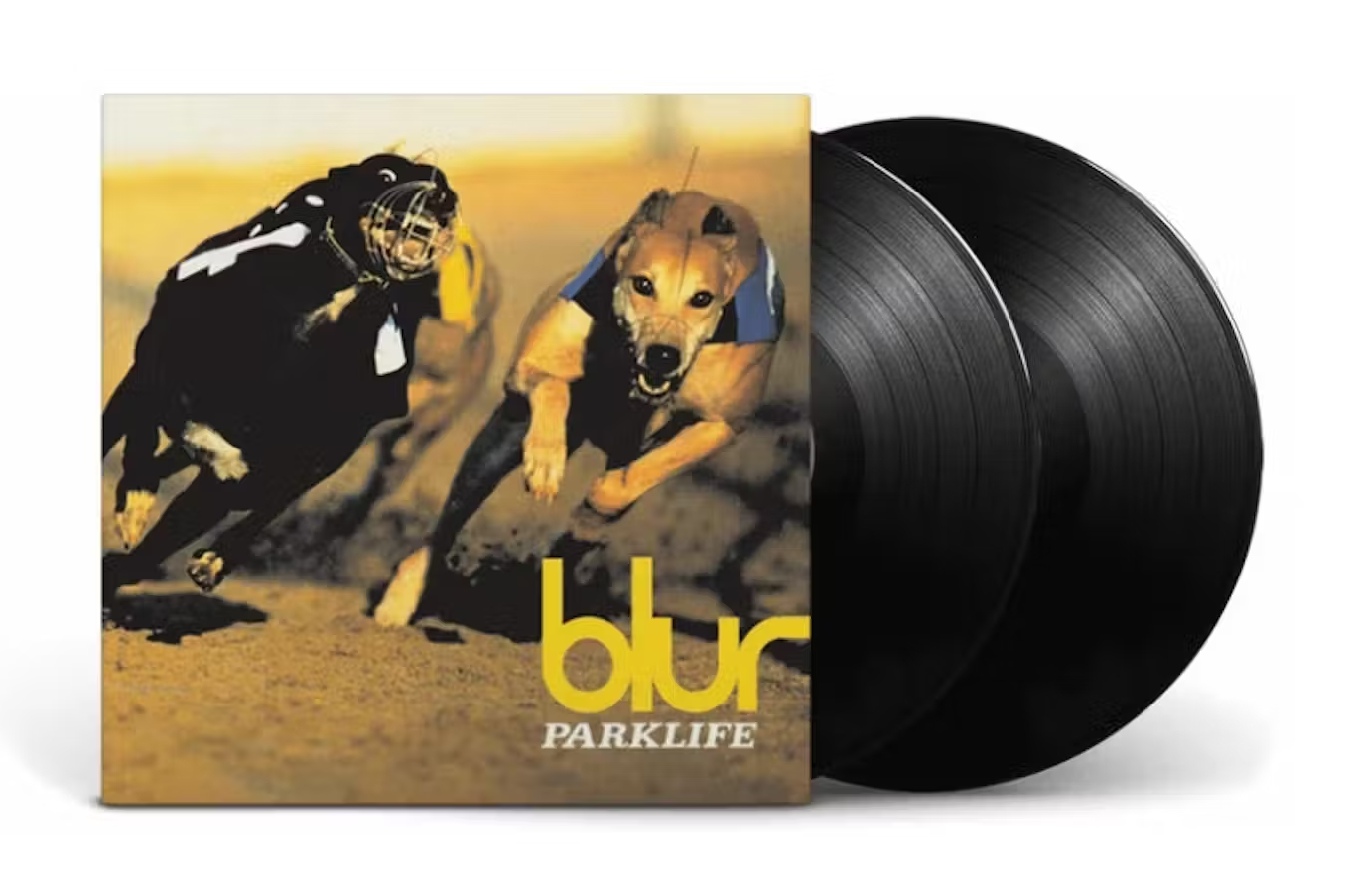
Blur – “Parklife” | Photo: Merchbar
CLAIRE MALLETT
Claire Mallett has worked in the bar industry in many capacities over the years. She is currently the Brand Ambassador for Dirty Sue Premium Olives. She consults at venues, predominantly the legendary Catch One nightclub – the home of Art Beyond the Glass, which she also helps produce. She has been an executive board member of USBG SoCal Chapter. She enjoys drinking a Martini while listening to her favorite vinyl.
Blur – Parklife [Food Records, 1994]
If there was ever an album that personally epitomizes the England I grew up in, it would be Parklife by Blur. It’s the musical equivalent of a Martin Parr photograph. Every song on the album is like a chapter of English life. The third record released by Blur, it debuted in 1994 and defined the birth of Britpop – when Oasis’s Definitely Maybe came out a few months later, the bookends of the scene were in place. There was instantly a divide: Blur were the arthouse Middle-Class boys from London, the South; and Oasis were the Working Class lads from Manchester, the North. The Britpop war came to a head in the summer of 1995 – when Blur moved the release date of their single, “County House” to the same day as Oasis’s “Roll With It,” the war was on! Who would get the #1 spot that week on Top of the Pops? The media whipped up a frenzy much like the Rolling Stones / Beatles rivalry of the 60s. You were either Team Blur or Team Oasis. There was trash talking and hype galore. As the chart counted down, Oasis fans were well gutted! Blur’s “Country House” slipped into #1, “Roll With It” came in at #2. I’m a middle class girl from the South, I’m a Blur person. In the arrogance of my youth, I said this exactly to the Gallagher brothers once, I thought it was funny, it did not go down well at all. They were being very obnoxious – even for English “lads” – I have no regrets.
A-Side: Sex on the Beach 2024
What makes Parklife so quintessentially British? A lot of British bands are attracted to an American sound in their music, especially the vocals. There is no mistaking Damon Albarn’s London twang. The first four tracks on Side A are all bangers! Starting with “Girls & Boys,” a commentary on the rite of passage for young people at the time, to head to Greece or Spain to go crazy – think spring break. One of my favorite tracks, “Tracey Jacks” tells the story of Tracey Jacks, a man approaching middle age and finding everything “so overrated.” You can really hear their Kinks and Faces influence. Next up is “End of a Century,” a ditty tackling the trials and tribulations of a long-term relationship: “We all say we don’t want to be alone, wear the same clothes because we feel the same, kiss with dry lips when we say goodnight, and I’m a century old, it’s nothing special.” The album’s title track, “Parklife,” follows. The spoken word is performed by actor Phil Daniels, who played Jimmy in The Who’s Quadrophenia film. He takes us through the day-to-day life in the habitual voyeur of what’s known as Parklife. It just can’t get more English than this song, you know wot I mean! Other songs reminisce on British charms like Bank Holidays, Sausages, the White Cliffs of Dover and putting your trousers on and having a cup of tea, to name a few.
A wonderful aspect of “Girls & Boys” is that as a girl at the time, it highlighted the freedom we felt – we were raised by the women who burned their bras and we were reaping the benefits. Naively, we thought the battle of the sexes was over. Where our mothers drank gin and tonics in the lounge side of the pub, we were drinking pints with the boys at the bar. We could be anything, do anything, nothing was going to stop us. We were finally equals. There was also a new sexual freedom, anything went: “Girls who want boys, who like boys to be girls, who do boys like they’re girls and do girls like they’re boys.” The gender lines were blurred and androgyny was a cultural part of what was known as the “Cool Britannia” era. Given the flavor of “Girls & Boys” and its holiday in the sun narrative, and the fact that 90s cocktails are back and being ordered en masse by young people today, let’s do a Sex on the Beach in a modern way, with quality ingredients – traditionally it’s made with Vodka, Peach Schnapps with orange and cranberry juice from a soda gun.
Sex on the Beach 2024
- 1½ oz St. George Citrus Vodka
- ¾ oz Juliette Peach Liqueur
- 2 oz fresh orange juice
- 2 oz cranberry juice
Fill a Collins glass with pebble ice, pour in the ingredients and stir. Garnish with a half orange wheel and a Dirty Sue Cherry.
B-Side: Last Word
The first track on Side B, “To the End” is probably the most beautiful song on the album, heading across the Channel for a very distinct French feel. The song is about a couple that is coming to the end of days in their relationship. Will they make it, we just don’t know. With a full orchestral accompaniment and a refrain in French by Letitia Sadler from Stereolab, “To the End” stands out for its soulful delicateness. For this song I can’t think of a better choice than a Last Word with the floral French essence of Chartreuse, a London Dry Gin, lime (for the Limeys) and just a smidge of bitterness from the Luxardo Liqueur.
Last Word
- ¾ oz Fords Gin
- ¾ oz Green Chartreuse
- ¾ oz Luxardo Maraschino Liqueur
- ¾ oz lime
Add the ingredients to a shaker with ice and shake. Pour into a coupe glass and garnish with a Dirty Sue Cherry.
Bonus Track: Snakebite & Black
For “Parklife,” it’s got to be a Snakebite & Black, that’s what we were drinking in the pubs in the 90s. Not for the faint of heart, it packs a punch!
Snakebite & Black
- ½ pint lager
- ½ pint dry cider
- Top with Blackcurrant Cordial
Serve cold in a pint glass.
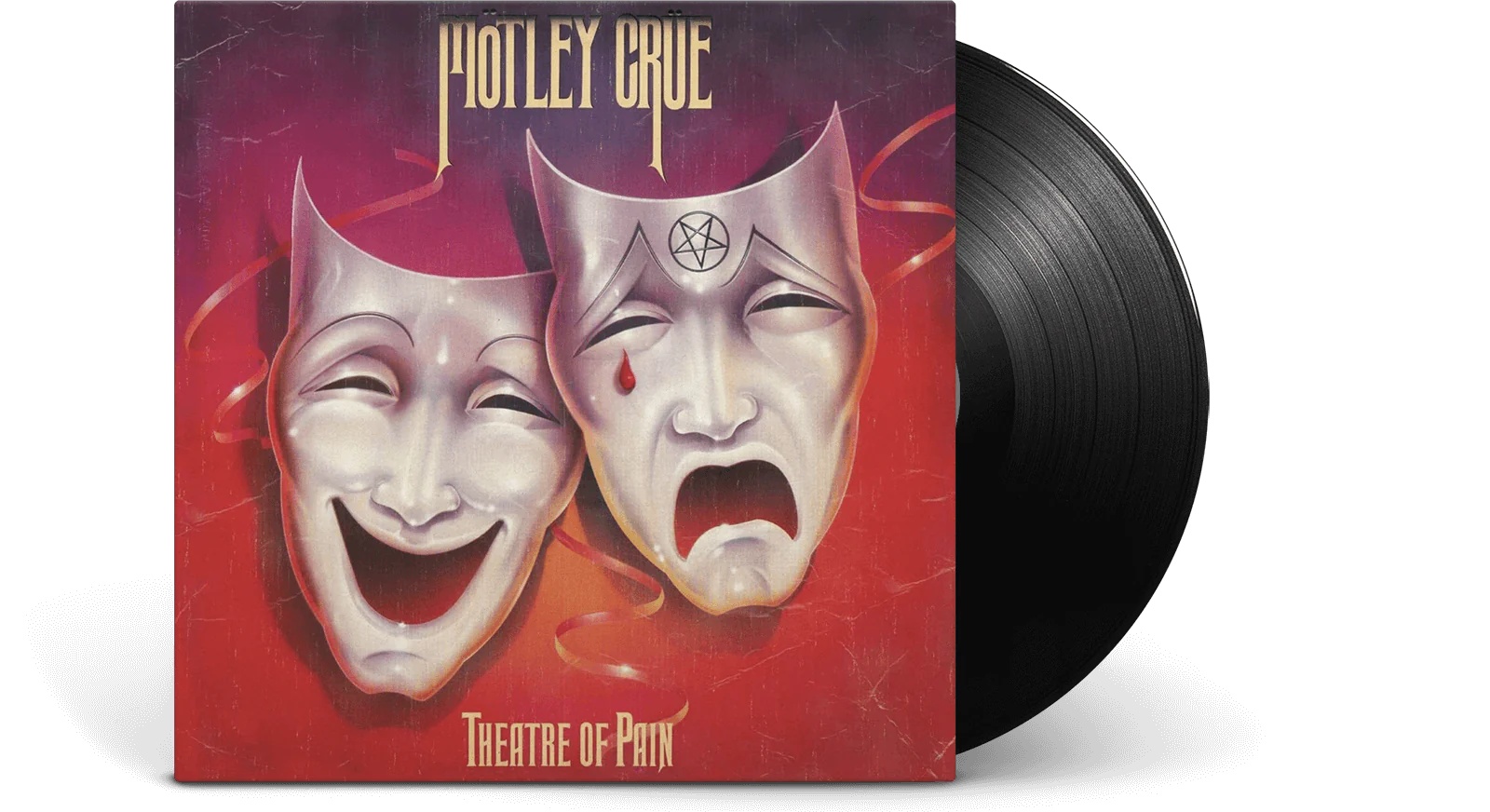
Mötley Crüe – “Theatre of Pain” | Photo: Mötley Crüe
COLIN BAUGH
Colin Baugh is the Founder and President of Emblem Public Relations (@emblem_pr). Colin brings more than 15 years of experience as a public relations professional specializing in the beverage industry. Emblem PR’s client roster boasts globally recognized brands, from the world’s first single-estate tequila, to a craft distillery tucked along the cobblestone streets of Red Hook, Brooklyn, to a bartender-created range of twice-filtered premium olive juice and cocktail garnishes. We know how to secure top-tier coverage for our clients when there’s news to report and, sometimes more crucially, in the times between the big announcements.
Mötley Crüe – Theatre of Pain [Elektra, 1985]
I was nine years old in the summer of 1986 and had, to that point, been raised strictly Catholic in the classic Irish American tradition that trains its adherents to be absolutely terrified of everything bands like Mötley Crüe stood for. Not the bands, explicitly – nobody in my family would have been aware of them – but of smoking, drinking, sex, drugs, overt rebellion.
My parents had both grown up in L.A. County. But the tidy orange groves of Whittier where none other than Richard Nixon spent his undergraduate years and the seaside paradise of the Palos Verdes Peninsula with its soft ocean breezes and wholesome Beach Blanket Bingo vibes were (and still are) cultural light years from the bright lights of the Sunset Strip. Mom’s She-Loves-You-Yeah-Yeah-Yeah-era Beatles and Dad’s effortless crooners like Nat King Cole and Frank Sinatra may have misbehaved behind closed doors, but remained, in the public eye, more or less the pictures of squeaky-clean decorum.
That summer – the time I wasn’t visiting family in Southern California – was spent at day camp at the local Boys & Girls Club in Federal Way, Washington. Lots of trips to the lake, talent shows and arts & crafts. It kept me out of trouble and that was the goal.
As I’m sure is the case with most such camps, the counselors were a mix of college do-gooders and younger junior counselors from the local high schools. One of those junior counselors was Heather. Or Stacy. Or Tiffany. Or Tracy. Or one of those hot girl names that was really popular in the 80s. For the purposes of this story, let’s call her Heather. Heather was everything I’d been trained to be terrified of. But the denim jacket, the teased hair, and the impossibly tan skin in a town where it seemed to rain every day could raise somebody clean out of a coma. Even at nine years old, I was rapt.
On one of those trips to the lake, we all piled into the navy blue Boys & Girls Club van. I made it my business to sit next to Heather. We settled in and she clicked a tape into her Walkman, slid her headphones on, pressed Play, and off we went. The only thing separating us was her bag – black leather. It was open. I peeked inside. Marlboro Lights, a few loose bills, and a cassette tape case. There it was: Theatre of Pain. Unlike my parents, I had heard of it. But I’d never heard it. I must have lingered a beat too long. Heather clicked off her Walkman. I looked up at her. “Wanna listen?” she said. Did I ever. She rewound. Track two, “Smokin’ In the Boys Room.”
Those three-and-a-half minutes begat a fandom spanning multiple decades, any number of live performances, and at least two cover-to-cover readings of The Dirt, my copy of which is highlighted and flagged at the most rock-and-roll moments in the band’s history.
In a number of ways, the Crüe’s career is a series of lessons in what not to do. And few would argue that the Bad Boys of Hollywood are less than qualified to offer life advice. But Theatre of Pain does offer at least one useful piece of advice from Vince, his buddies Mick, Sixx, and Tom. Dig out that old Walkman, slide on your headphones, fast forward to track four, and press Play.
A-Side: Budweiser in a 12oz can
The challenge here is to set aside my love for great cocktails in order to stay true to the record. Most of the cocktails the Crüe indulged in at the time would get you thrown in the clink, or worse (see: Sixx, Nikki). Bud Heavy is such a perfect beer to pair with a rock and roll record. That familiar flavor; big enough that you know it’s there but never distracting from the main thing, which is the rock. Just you and a couple buddies, a sixer each just feels right.
B-Side: Shot of whatever’s brown and open
It’s gotta be brown and it’s gotta be affordable – Old Crow, Old Grandad, maybe somebody swiped a bottle of J&B or Cutty Sark from their dad. Point is, this ain’t about bells and whistles or experimental mash bills. This is about making sure there’s enough for everybody at the party. And if you do run out, don’t do like Vince did in ‘84.
Nonprofit: USBG National Charity Foundation
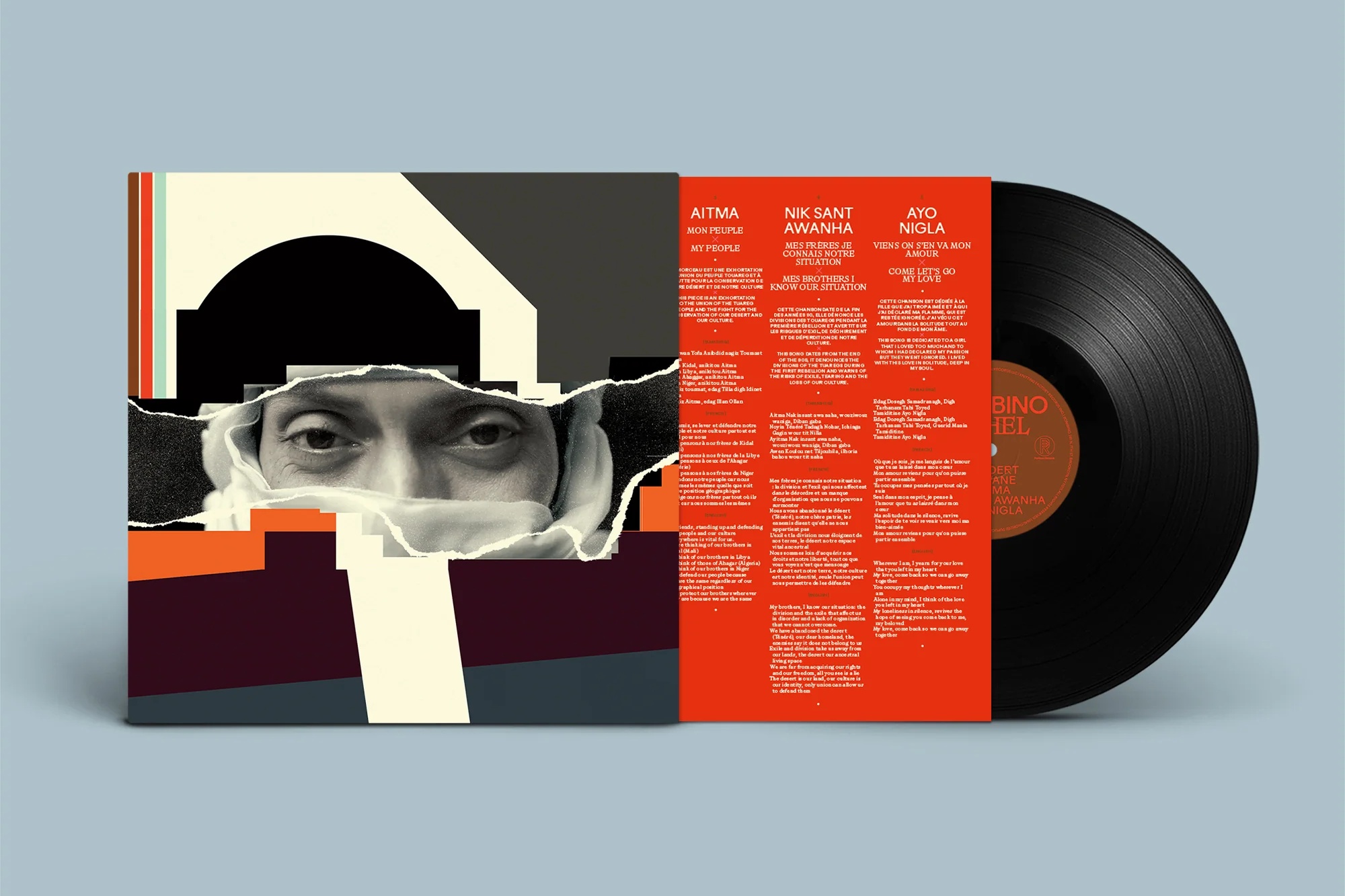
Bombino – “Sahel” | Photo: Sound of Vinyl
DAVE STOLTE
Design director and award-winning illustrator Dave Stolte heads the studio Wexler of California, providing creative services to the restaurant, bar, and liquor industries. Clients have included Disney, Pernod Ricard, Campari America, Marnier Lapostolle, Rémy Cointreau, Smuggler’s Cove, The Bon Vivants, Lush Life Productions, Haas Brothers, Las Joyas del Agave, Dirty Sue, and Consortium Holdings (San Diego). He is the author, illustrator, and publisher of Home Bar Basics (and Not-So-Basics), twice nominated for a Tales of the Cocktail® Spirited Award as “Best New Cocktail Book,” now available in an all-new third edition co-authored with Jason Schiffer.
Bombino – Sahel [Partisan Records, 2023]
Game for some ear-bending psychedelic trance guitar and vocals you won’t understand (unless you speak Tamasheq)? Check out the music of Bombino, a Nigerian-born man of the Tuareg people who fled to Algeria with his family in 1990 at age ten. On his return back home in 2010, he began a musical career celebrating his culture, merged with influences from his temporary home to the north. His initial recordings caught the attention of producer Dan Auerbach (of The Black Keys), resulting in the fantastic 2013 album Nomad. His latest album, Sahel, was produced by David Wrench (David Byrne, Frank Ocean, Goldfrapp). This music transcends time and culture – sounding both ancient and fresh.
I took a bit of a deep dive into various Mediterranean music genres while working on a personal volunteer project in my spare time over the last few months: creating a digital archive of photos shot in Tunisia, Algeria and Morocco in 1932. How I fell into that particular rabbit hole is a whole story (or “hole” story) but I’ll be as brief as possible. When I moved to Riverside seven years ago and restored/renovated a 1910 Craftsman, I got involved in the local historic preservation community. That led to my eventual nomination as volunteer president of the Old Riverside Foundation, an arts & culture nonprofit founded in 1979 to protect the at-risk “golden age” architecture of Riverside.
As part of what we do (in addition to advocacy, education, grants, events, and architectural salvage) ORF has also been caretaker of a quirky landmark home, the Peter J. Weber House, since 1990. Weber was the lead design architect for the firm of G. Stanley Wilson in Riverside from the 1920s to the ’50s. He designed and built his energy-efficient home out of primarily salvaged materials in the thick of the Great Depression. Prior to building that home, he and his wife Clara took a 14-month long honeymoon in 1931 and 1932, driving across almost all of Europe and North Africa. Weber took more than 8,000 photos as he went, making notes of where they were, developing the 35mm film in his hotel room each night… and then never did anything with all those photos for the rest of his life. No slides, no prints. History’s mysteries!
His son eventually found the pile of 35mm film rolls in a box around 2005 – still individually wrapped in paper with his father’s location and date notes. As caretakers of the Weber House and its associated collections, with the generosity of Weber’s granddaughters, we are in possession of those film rolls and are about halfway through a year-long process of creating hi-res scans of each image. I’ve been researching where each one was shot to create a comprehensive archive that will eventually be available online through the California State Library. A sneak peek of some of my favorites from Tunisia, Algeria, Morocco and Spain are shown here.

Minaret, Great Mosque of Kairouan, Tunisia | Photo: Peter J. Weber, courtesy of Old Riverside Foundation

Great Mosque, Tlemcen, Algeria | Photo: Peter J. Weber, courtesy of Old Riverside Foundation

Funduq al-Najjarin, Fez, Morocco | Photo: Peter J. Weber, courtesy of Old Riverside Foundation
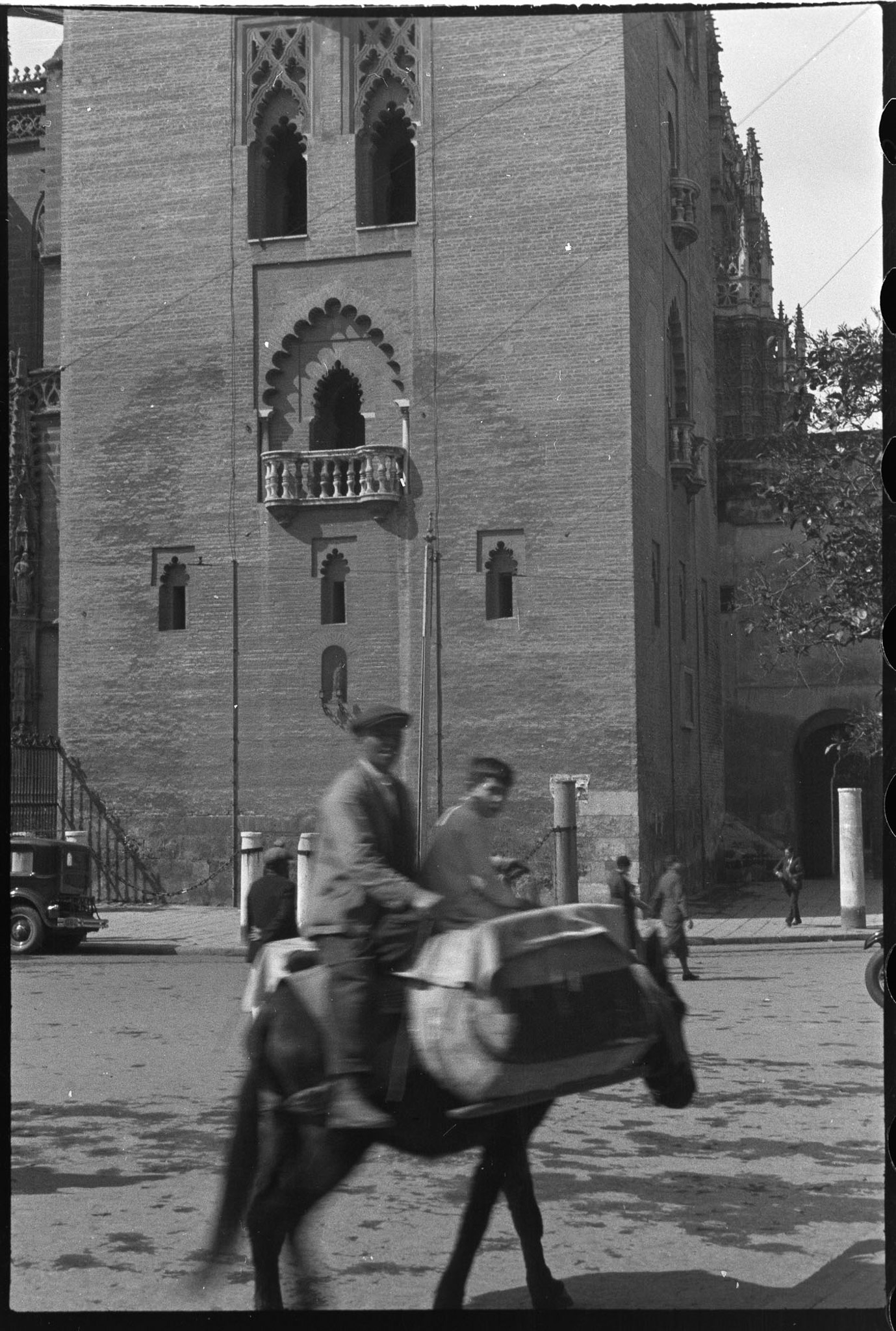
Giralda from Plaza Virgen de los Reyes, Sevilla, Spain | Photo: Peter J. Weber, courtesy of Old Riverside Foundation
I wanted some music to accompany this effort and set the mood, so the real meat of this situation is Mediterraneana – a three-hour playlist I assembled of music from and inspired by the Mediterranean region, with an emphasis on North Africa and Moorish Spain. It’s kickstarted what Kristin and I have determined will be “the summer of Mediterranean food.” We’ve already started with baharat-spiced grilled lamb kofta. Visiting Algeria was never a bucket list item for me – but it is now!
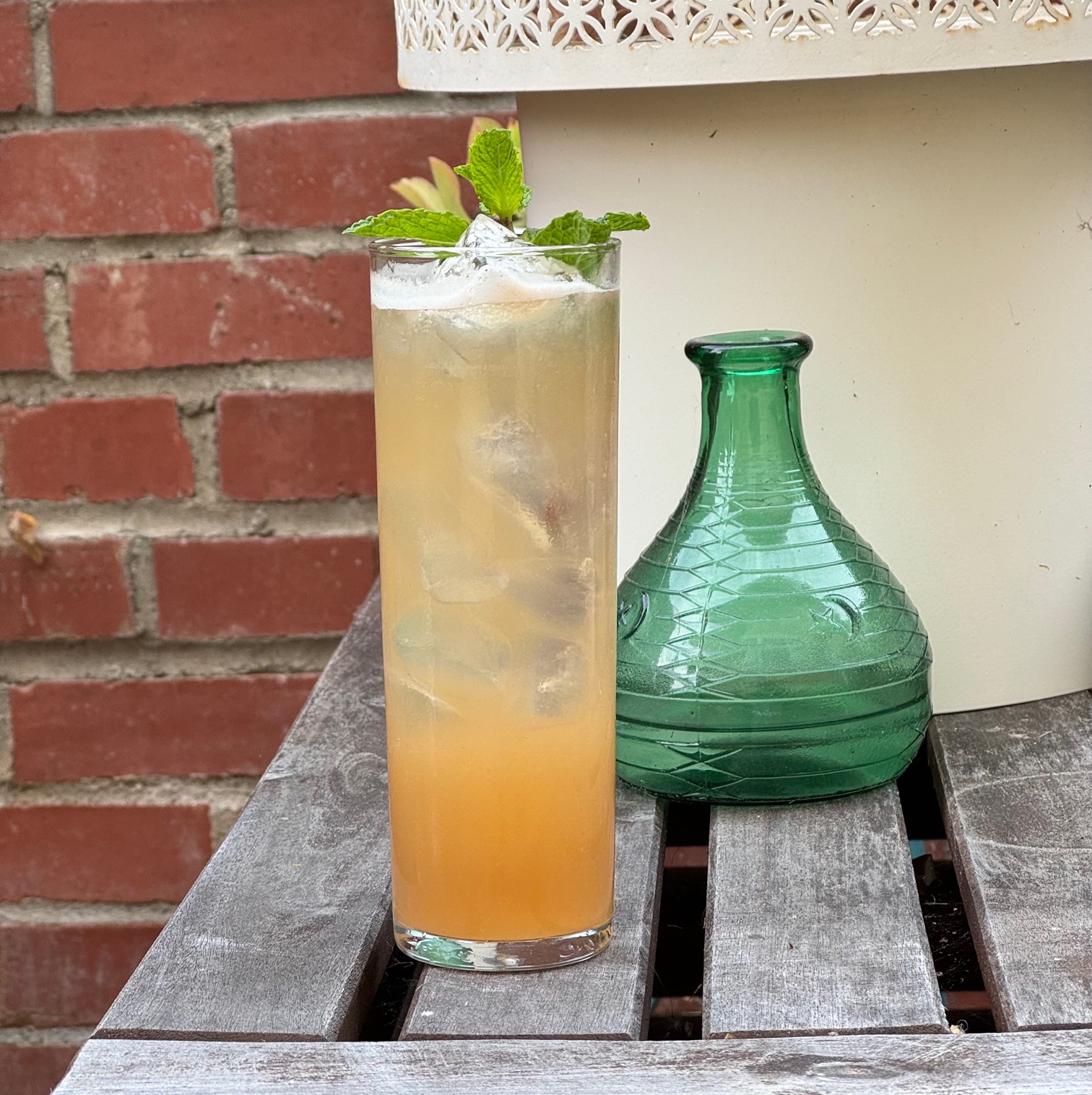
Suffering Bastard | Photo: Dave Stolte
A-Side: Suffering Bastard
On the cocktail side of things, the Smuggler’s Cove version of Joe Scialom’s legendary 1942 Suffering Bastard from Egypt will fit the bill.
Suffering Bastard
In a shaker, combine:
- 1 oz London dry gin
- 1 oz Cognac
- ½ oz lime juice
- ¼ oz rich demerara syrup
- 2 dashes Angostura bitters
Shake with ice and add to the tin:
- 4 oz ginger beer
Pour over fresh ice in a Collins glass. Garnish with mint.
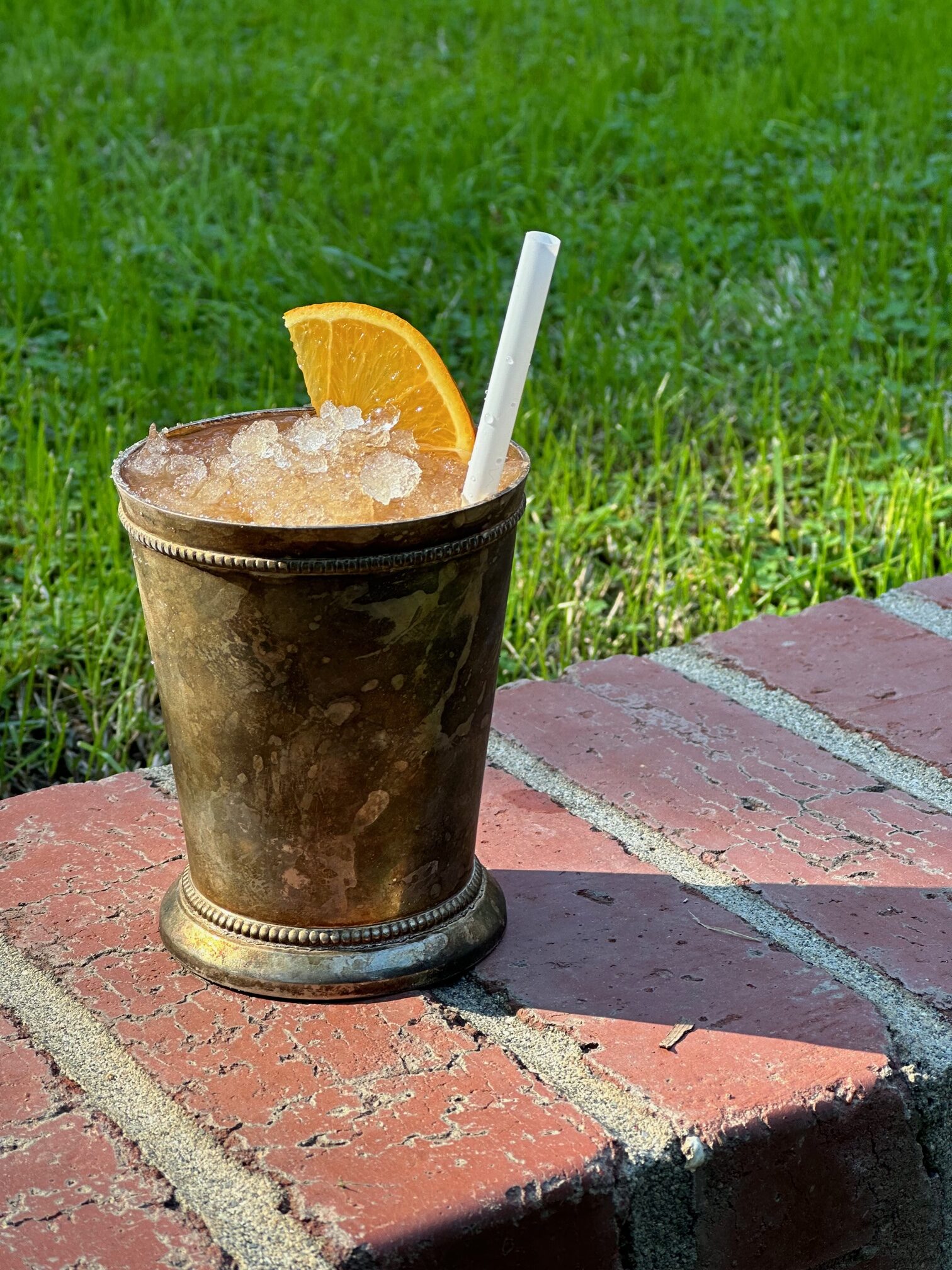
Sherry Cobbler | Photo: Dave Stolte
B-Side: Sherry Cobbler
Heading up to Spain, we’ll pick up some Lustau Amontillado sherry in Jerez de la Frontera for a Sherry Cobbler. At a recent event in Los Angeles, I was surprised and delighted to hear Naomi Schimek [see below] name this drink as her all-time favorite. Here’s how I like it.
Sherry Cobbler
In a julep cup, combine:
- 1 orange wheel
- 1 quarter lemon
- ½ oz rich Demerara syrup
Muddle to express juice, then add:
- 3 oz Amontillado sherry
Add crushed or pebble ice and stir/swizzle to chill. Mound with additional ice and garnish with seasonal fruit. Mint if you feel like it. Serve with a straw.
I’d be remiss if I didn’t mention Riverside’s very own Penrose Record Room, founded by Gabe Roth (better known as his alter ego Bosco Mann, Daptone producer and musician with Sharon Jones and the Dap-Kings). His recording studio is located in the same building, and he’s created a destination for vinyl collectors and fans of local musicians. Well worth including on a day trip to Riverside.
Nonprofit: Old Riverside Foundation
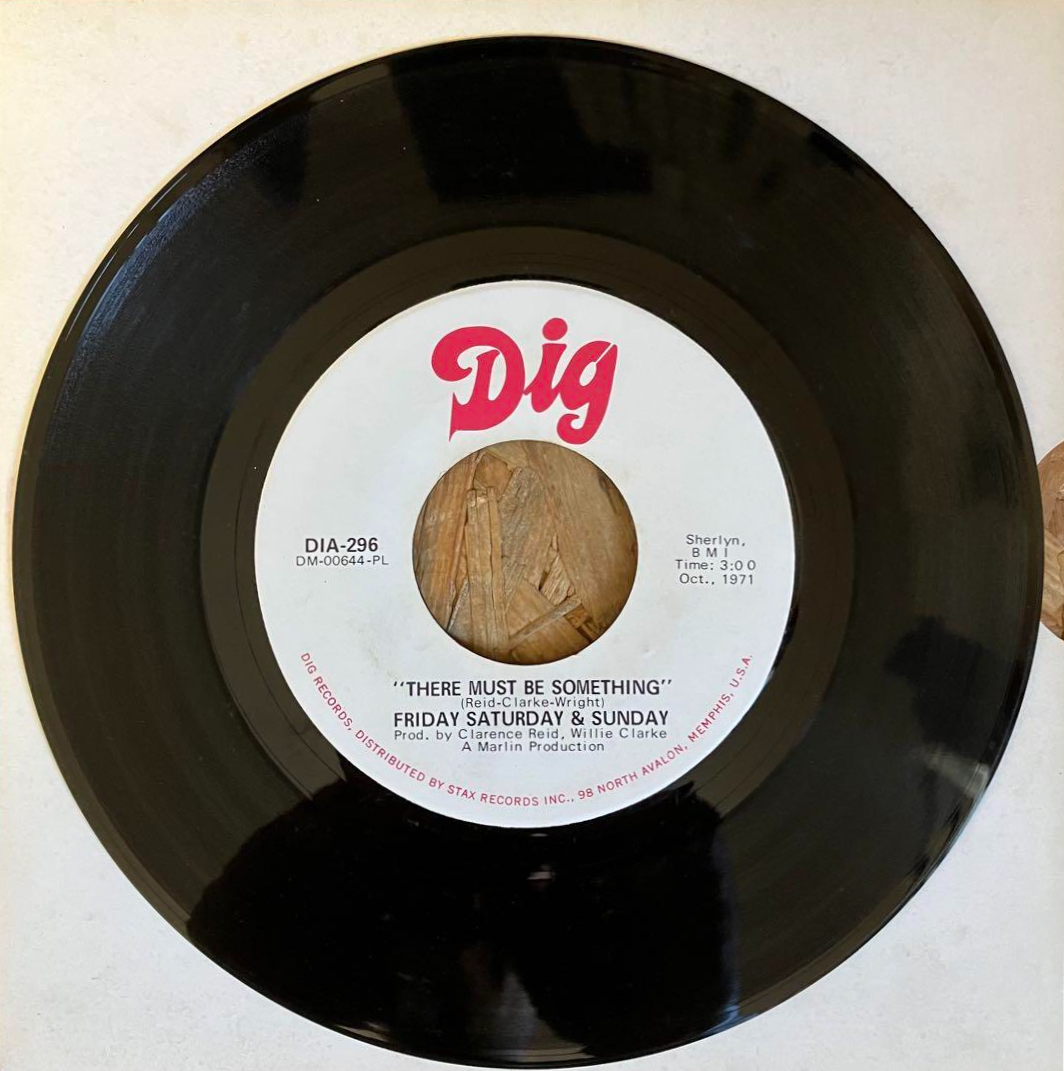
Friday Saturday & Sunday – “There Must Be Something” | Photo: YouTube
GEOFFREY WILSON
This year’s review is going to be about a B-side called “There Must Be Something” and a little known cocktail from the 1920s called the Flu Cocktail.
Let me reintroduce myself: My name is Geoffrey Wilson and I am a record collector/DJ; I’m on the Leadership staff of a New Orleans nonprofit called Turning Tables, and a part-time bartender at Cane & Table. Recently we took off a cocktail called the Flu Cocktail which is in the 1922 book, Harry’s ABC of Mixing Cocktails. The cocktail specs are basically five ingredients that are either barspoons or dashes. Not a big cocktail. The specs we use are 1 oz each of Jamaican rum and Bourbon; .75 oz of ginger syrup and lemon juice. It’s an easy cocktail to make, and to me it’s a predecessor of the Penicillin cocktail.
This is where the idea of the “B-side” comes in. Dig Records was founded in 1970 by Henry Stone in Miami. Henry already had a few labels under the umbrella of T.K. Productions which had artists like George McRae, Bobby Caldwell, Anita Ward, Betty Wright, Clarence Reid and some 80s James Brown to name a few. Dig Records has more obscure (to the general public) artists like the Diamonettes and a young Jimmy “Bo” Horne. There isn’t a lot of information about Friday Saturday & Sunday that I could find except for the fact that a lot of folks from the T.K. label played on the record. This happens to be my second copy.
The B-side is called “There Must Be Something,” and it’s a sweet and soulful love song. Female/male vocal harmonies, drums, bass and an electric piano (probably recorded in a live room) are all that is needed for this mid-tempo banger. When I first heard it, I was taken aback by how funky and tight it was, while a feeling of happiness prevailed throughout the song – I instantly fell in love with it! I’m still in love with it.
This 45 is not on any streaming platforms, so here’s a YouTube clip.
A couple of facts about the record:
- Before the reissue in 2023, this (still) sells on eBay and Discogs for at least $400.
- Stax Records out of Memphis liked this record so much that they pressed more records and distributed it to a wider audience.
Here’s where the B-side theory comes in: If you’re familiar with the Penicillin cocktail, even though it’s only been around since 2005, it’s a cocktail that is very familiar. The Flu Cocktail is hella old and very unfamiliar, but for me personally, the B-side wins again.
Nonprofit: “Turning Tables advocates for equity in the hospitality industry by providing mentorship, educational tools and exposure in a system of support for the Black and Brown Communities of New Orleans. Turning Tables is changing the face of hospitality by cultivating leadership and creating a model for equitable access to career pathways.
We seek out partnerships with employers, brands, and like-minded individuals in the industry that recognize the pervasive inequity within the industry and want to join us in challenging it. We support them to identify the ways in which racism, discrimination, and implicit bias have permeated their establishments, and help them implement new practices and policies to eliminate it.”
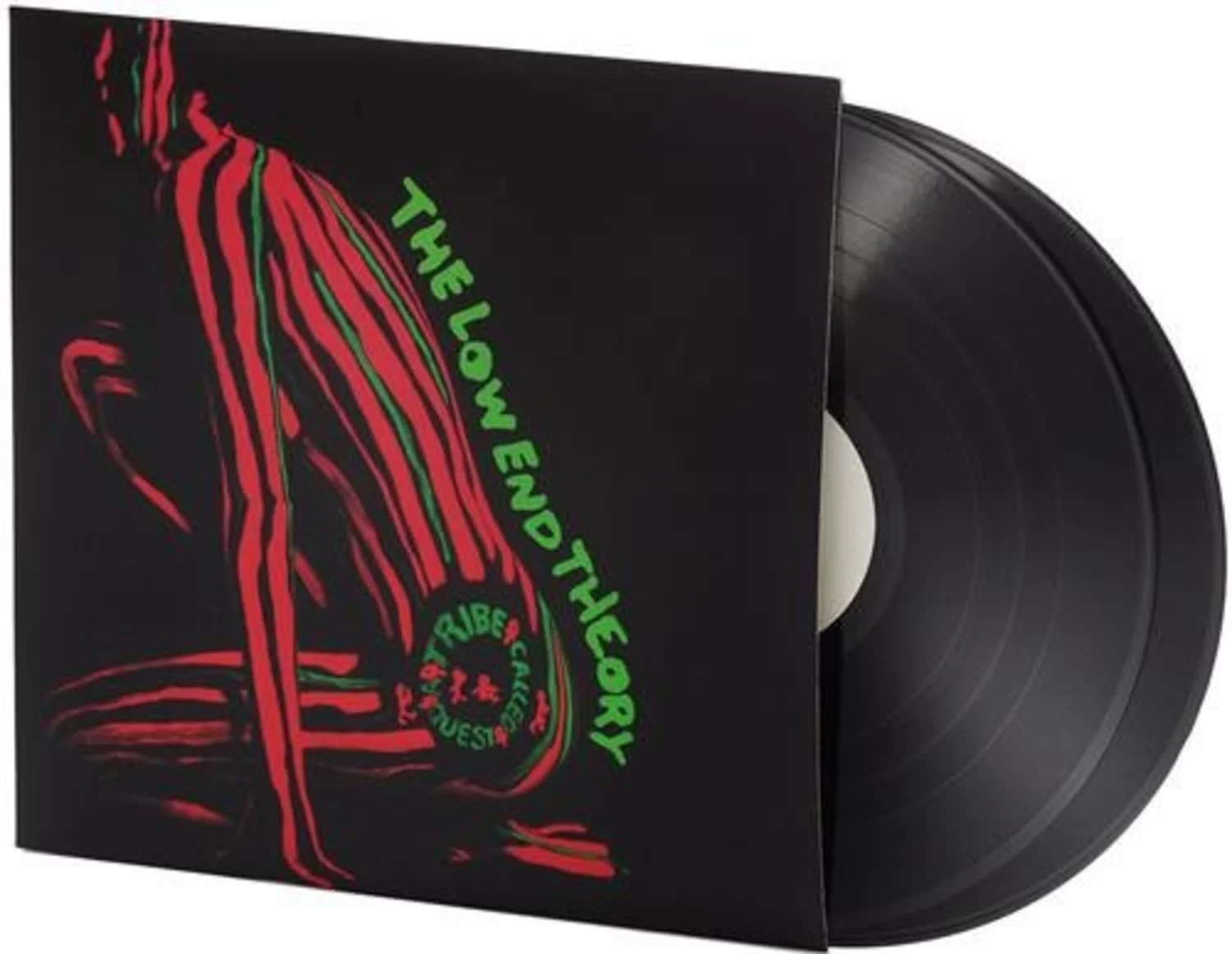
A Tribe Called Quest – “The Low End Theory” | Photo: Wax Trax Records
KELI RIVERS
It would be humble to say that Keli Rivers has been very lucky in her career – first employee hired at San Francisco’s Whitechapel as their ginnoisseur, featuring the largest gin selection in the Americas – to her current role as Brand Ambassador of the juggernaut Sipsmith living in Brooklyn – but honestly she has worked her butt off to get to where she is. Her love of music started off at an early age from her prized “Sesame Street Fever” disco album, to long conversations with her father about beer, blues and BBQ and even a five-year sentence as music director for UC Berkeley’s radio station KALX, where she learned of her immense dislike of her own voice as DJ Jellybean! Currently she spends her time spreading the gospel of juniper driven beverages with a perfectly crafted Negroni in hand. One might call Keli’s fascination with the marriage of the botanically guided and music an unhealthy fixation – however in the words of the infamous icon John Waters, “Without obsession, life is nothing.”
A Tribe Called Quest – The Low End Theory [Jive, 1991]
10 seconds of thumping solo bass. 10 seconds to hip-hop, jazz, lyrical poetry. 10 seconds to change the course of this young person’s ideals of live music. 10 seconds of the most recognizable intro to any 5-star, highly recommended, list topping, hip-hop masterpiece ever and that is before Q-Tip even starts to rap.
“Excursions” might set the tone to one of the most influential albums of my high school years, but it is just one highlight to this fully realized album. Don’t even bother to separate the songs as the tracklist of The Low End Theory is perfect and demands to be played from start to finish. You don’t deserve the superior flow and dynamic rhyme of “Scenario” if you don’t go through “ ..the snakes, the fakes, the lies, the highs at all of these industry shing-dings.” Skip ahead and “you get an E for effort, and T for nice try.”
I remember going to our mall’s Tower Records in 1991 to purchase this sophomore album from A Tribe Called Quest in the longbox. (Millennials/Gen Zs: between 1988-1993 when you physically purchased a $25+ CD it came in a cardboard longbox. Google it, and amaze your friends with this tidbit from the Jurassic Period.)
Keli’s Note: The U.S. market didn’t see a 2-disc vinyl set until 1996; however I got my hands on the 1991 UK version sporting a slightly different tracklisting, allowing me to show off the audiophile trophy that I awarded myself.
I was mildly obsessed with how cool listening to this album made me feel, almost dangerous. So when Tribe announced they were playing the main stage at 1994’s Lollapalooza at the Shoreline Amphitheater I woke up early to stand in line at a Ticketmaster box office to purchase a ticket, my first solo concert. You couldn’t pay me to go to a music festival now, but at 18 I craved that middle of all that energy requiring me not to abandon my spot for hours – what I would give for my younger self’s bladder. In waiting for Phife Dawg, Ali Shaheed Muhammad and Q-Tip to grace the stage I rocked out to Shonen Knife, Nick Cave and the Bad Seeds, Flaming Lips, Lambchop, Guided by Voices and Stereolab, which set me on a neverending quest for new music!
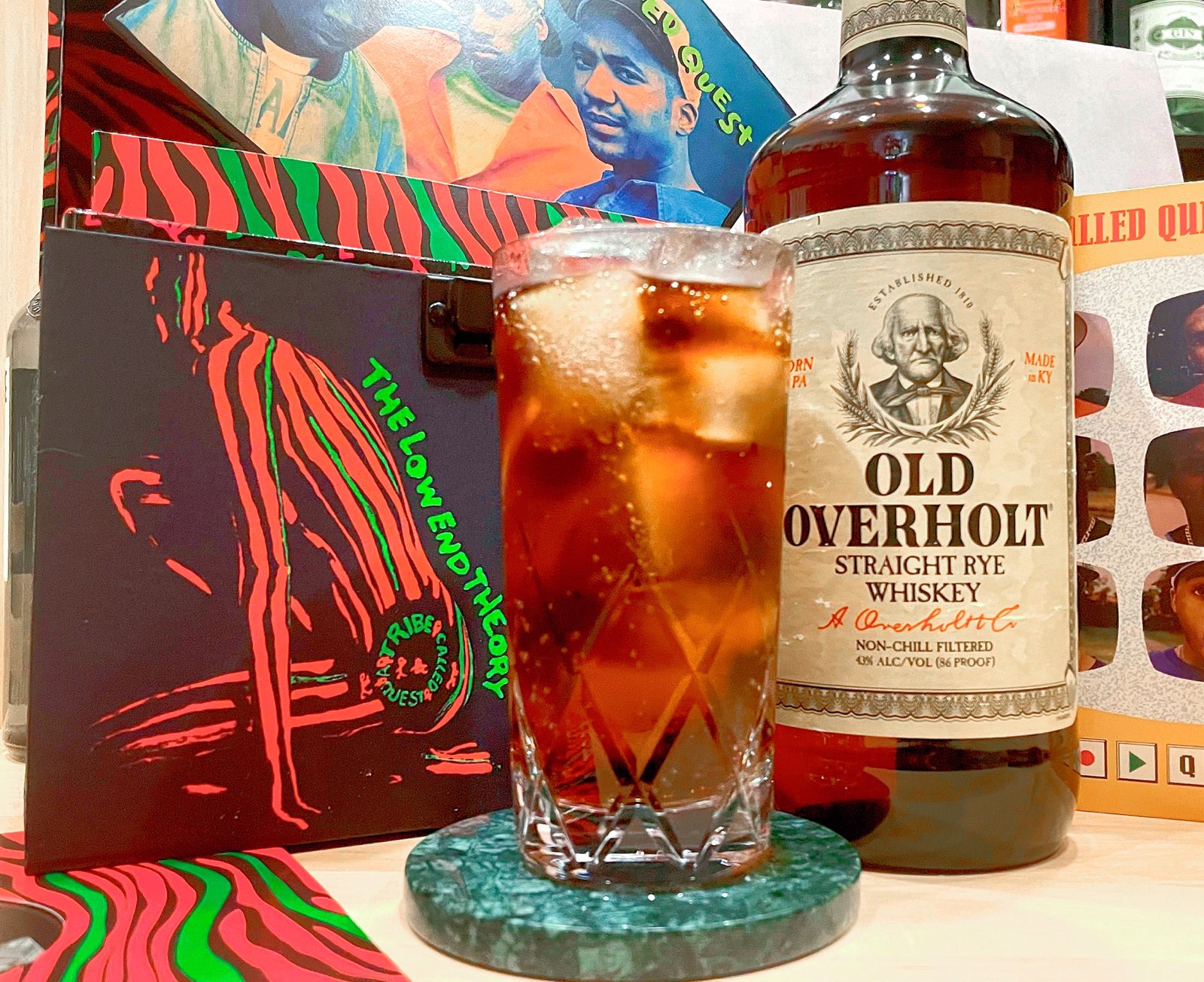
The Good Doctor | Photo: Keli Rivers
Album 1, Side A & B: The Good Doctor
How does one pick a favorite to have a frosty beverage with? “Vibes and Stuff”? “Butter”? If I had to, as this is the assignment, it’s got to be “Buggin’ Out” with too many 90s cultural references to mention – it rocks, heavily sampling Blue Note alumnus and master Hammond B3 organist, Dr. Lonnie Smith. Phife steps up to the plate, not bothering to look back and commands the microphone: “Yo, microphone check one two what is this, The five foot assassin with the ruffneck business, I float like gravity, never had a cavity, Got more rhymes than the Winans got family.”
Keli’s Note: The Winans family is gospel royalty with a cumulative 35 Grammys, 10 singing siblings and their parents. Most famous family members BeBe & CeCe Winans who wrote and recorded “Up Where We Belong” for the soundtrack of An Officer and A Gentleman.
Don’t even get me started on the music video – those eyes still haunt me! In honor of never being a half stepper but drinking a lot of Dr. Pepper, I offer up The Good Doctor.
The Good Doctor
- 1½ parts Old Overholt Bonded
- 1½ parts Averna
- 6 oz Dr. Pepper
Fill a Collins glass with ice add ingredients, stir and contemplate “what the world could they be wanting see from little old me.”
Album 2, Side C & D: Gin Jammy Jam
Let’s talk about the oft-criticized opening track from the second disc, “Infamous Date Rape.” Some music historians point to the cringe lines of “Baby, baby, baby, I don’t wanna be rude, But I know because of your bloody attitude, I know why you act that way, It usually happens on the 28th day” and pan the whole thing, while fans argue that the 90s were a different time and it shouldn’t cloud one’s judgment of the song. But I hear Q-Tip and Phife Dawg rapping about consent, communication and mutual respect: “Should you try to kiss or hint towards a hickey? Not even, you can ask Steven, If the vibe ain’t right, huh, ya leavin’.“ So, we listen again with open minds and appreciate how progressive it was in an era when songs from Naughty By Nature and NWA topped the charts.
The commercial hit of the album, “Check the Rhime” features drum samples from Grover Washington Jr’s 1975 “Hydra ” and the infectious hook of “Baby, This Love I Have” off Minnie Riperton’s soulful masterpiece Adventures in Paradise with a guest verse from 21-year-old Brooklyn native, Busta Rhymes – spectacular, but too obvious for a Record Store Day posting. So for me it’s “What?” that had me lifting the needle to restart the track, committing to memory each line. Take equal parts drum samples straight from Paul Humphrey’s “Uncle Willie’s Dream” (I recommend you look this up as it deserves a listen or three) and the easy-to-memorize lyrical styling and you have the perfect recipe to finally answer, “What is a jam if you don’t spike the punch?”
Added bonus: I was able to torment my older sister one afternoon while she was convalescing from a serious injury and couldn’t get up to turn off the stereo as I put this song on repeat for four hours.
Gin Jammy Jam
- 2 parts Sipsmith London Dry Gin
- ½ part fresh lemon juice
- 2 heaping tablespoons of your favorite jam or jelly
- Top with sparkling water
Take the first three ingredients and put in a clean jelly jar or shaking tin. Shake and then “Oooh ooh, it’s like that you keep goin’ Freak, freak, y’all ’cause you know that we showin’.” Strain into a tall glass filled with ice and top with soda water.
For the album’s 30th anniversary in 2021, Sony Music Entertainment released a 2-disc colored vinyl set as well as a second-run 7” collection box set with all-new colored vinyl. Run, don’t walk to see if your local record store still has any copies.
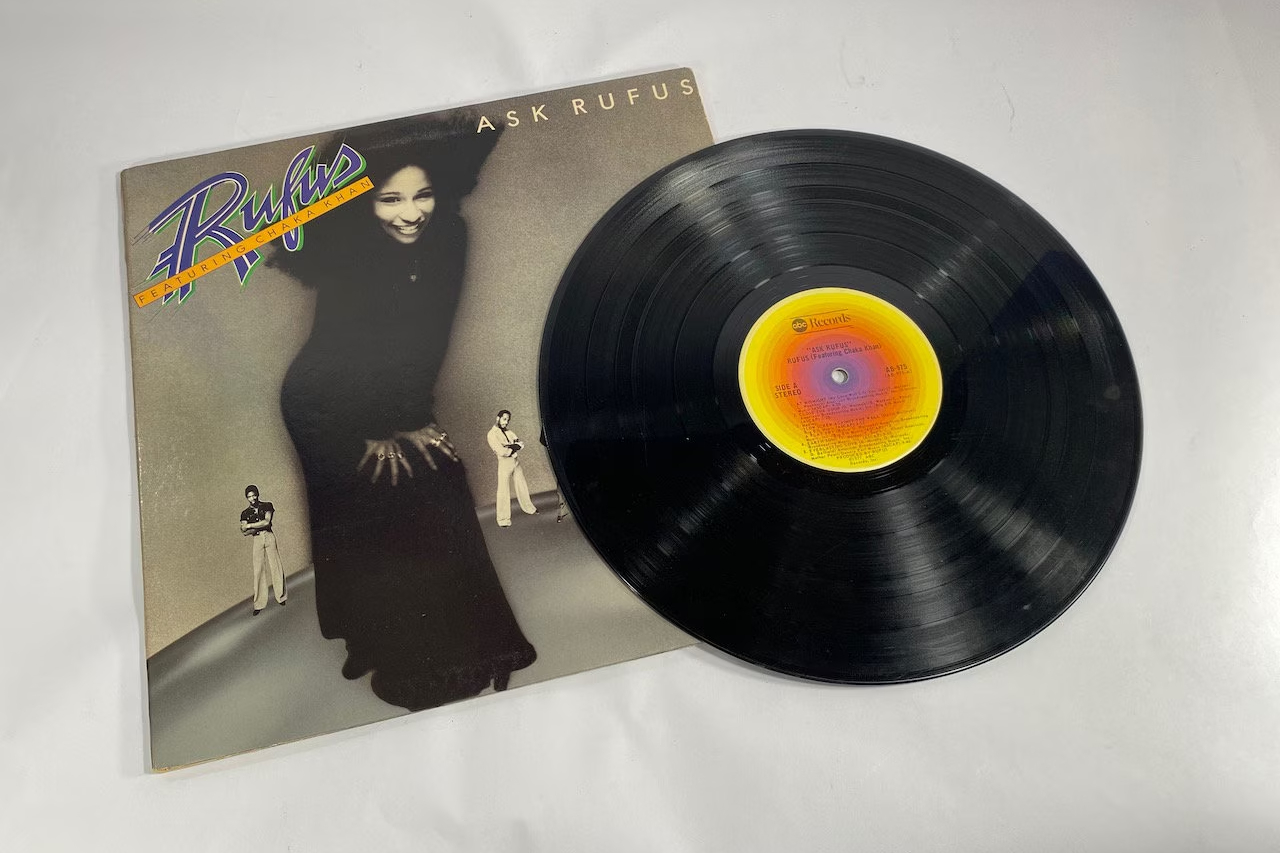
Rufus feat. Chaka Khan – “Ask Rufus” | Photo: Etsy
NAOMI SCHIMEK
Naomi Schimek jumped back into the local bartending arena in 2019 after spending the previous six years traversing the globe as a brand ambassador and guest bartender via her bar and beverage consultancy, Schimek Studios. She is well-known for her creative impact on the early days of the LA mixology scene, then a culmination of a storied bar career that began in the early 90s. Naomi is currently the bar director at Soulmate West Hollywood. She likes old cars, new dresses and rock n’ roll.
Rufus feat. Chaka Khan – Ask Rufus [ABC Records, 1977]
The indisputable Queen of Funk – international music icon, lifelong activist and devoted philanthropist with 10 Grammys to boot – how I absolutely adore Chaka Khan.
Before (and sometimes during) her ongoing career as a genre-floating, massively influential superstar, Khan was the lead singer of the multiracial funk band Rufus. Raised in Hyde Park, Chaka had begun harmonizing in 1960s Chicago when she was a teenager, singing with several bands before joining Rufus. Her vivid, electrifying stage presence, gorgeous stage outfits and cosmic, powerful vocals transformed the band’s shows – they subsequently recorded with Ike Turner. A hit penned by Stevie Wonder shot them to the top of the charts in 1974 and blew the doors wide open.
The band wrote and produced most of their music themselves, with Chaka often co-writing, playing percussion and bass. Their arc together has a fantastic discography, but to me there is something magical and sophisticated about Ask Rufus. There are rolling jazz influences, Latin beats, and orchestral arrangements merging with tight funk that showcase Chaka’s vocal expertise. Conceptually, Side A is like a mini-album in itself – the beautiful, gentle songwriting belies the studio fistfights and tensions roiling underneath the production. Below is the recipe referenced on track three, an instrumental interlude.
A-Side: A Slow Screw Against a Wall
Create your own balanced version of this timeless ‘70s classic depending on both the sweetness of the orange juice at hand and whichever brand of sloe gin you have. Choose how much vodka to include, maybe opting for good ol’ Southern Comfort to make it a “comfortable” screw. As is traditional, use only Galliano for floating a delicate “wall” on the top with a barspoon. Remember this liqueur will bring a bit more sweetness as well as notes of anise. Personally, I’d make mine with a large ratio of tart, white grapefruit juice plus a dash of lemon and use all of the above with loads of crushed ice. Garnish with an orchid.
B-Side: Airmail
Side B whips around with an uptempo, cautionary tale about Hollywood dreams before delving into pure hammock music. Clare Fischer’s string arrangements dreamily weave “Magic in Your Eyes” and “Better Days” on into “Egyptian Song,” where Chaka’s vocals as musical instrument stun. The artistic care taken with the sequencing on both sides of this record is an ideal example of the advantages of album-oriented listening.
Airmail
- ½ oz honey syrup (2:1)
- ½ oz lemon juice
- 1 oz rum (I like a split base of Martí Autentico Platino and Mount Gay Eclipse for this one)
Shake briefly, and strain into a coupe or flute. Top with your favorite economical, bone-dry cava.
Garnish with directions to Hollywood, good vibrations and free food for everybody.
Finish the rest of the bottle in the hammock, accompanied by Side B.
Nonprofit: I’d like to draw attention to the Inner City Youth Orchestra (part of Heart of Los Angeles). The free after-school youth orchestra program is inspired by the Venezuelan El Sistema movement and provides free instruments, ensemble-based classical music instruction, and performance opportunities to underserved and at-risk youth in Los Angeles.
